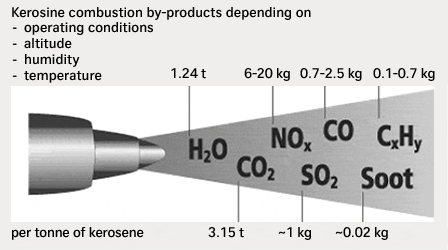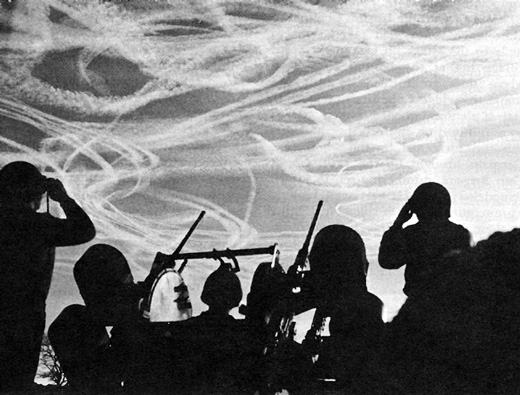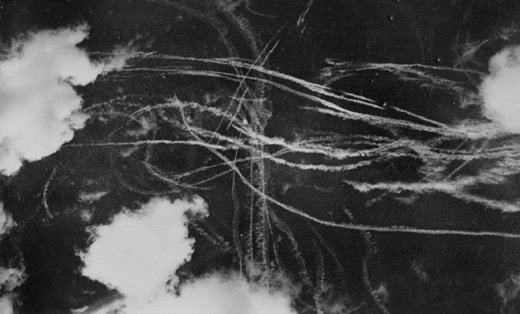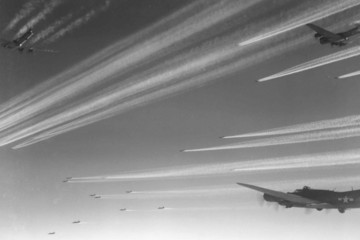It looks like you're using an Ad Blocker.
Please white-list or disable AboveTopSecret.com in your ad-blocking tool.
Thank you.
Some features of ATS will be disabled while you continue to use an ad-blocker.
share:
reply to post by firepilot
YES! Exactly correct, and thanks for saying it again:
Hopefully, for those who are reading and have not yet taken the time to study and learn the science of atmospheric interactions (aka, "meteorology")...well, maybe they will now be influenced.
SIDE BAR!!! As I write this, local time in the Pacific Zone (PST), it is 15:09 (3:09 PM)....I just heard, but could not see due to the overcast in my location, a sound of loud jet engines.....or, even could have been a rocket launch sound, of course I am many miles south of Vandenberg, and the launch facility there....so, I doubt that I heard a rocket launch from that distance away.
What I heard seemed to be more to the south, and west of my current position (presently on the Palos Verdes Peninsula). I would, if I had to guess.....suggest that I heard a military jet nearby, and will have to look up any reasons for one to be actively flying in the vicinity....
SECOND update, as I am typing....now @15:15....just heard, again the sound of a jet at HIGH altitude, echoing into my window. Since sound travels slower than light, it is hard to locate the exact position of the jet making the sound...and, as I said, it is overcast at the moment. Now, hear another jet. bit farther away.....this is unusual for where I live....it is now descending, and getting louder.
Possibly the same military jet, in a holding pattern nearby....or "orbiting" as it might be sometimes called.. Also could be training maneuvers I am hearing.
Again....overcast, low stratus, some broken spots in the clouds but, in the area? Low clouds obscure anything at altitude.
Well, welcome to reality, everyone!!! Experienced pilots tend to know what they hear and see, compared to the average layperson.....here, I cannot see, but can hear. Take it as you will......
YES! Exactly correct, and thanks for saying it again:
Well my point was more about low level moisture, which is what is going to drive precipitation events. That a jet up high, while adding water by means of its exhaust, is not adding water to the lower levels, that that low level water is what is neccessarily for rain and snow events.
Hopefully, for those who are reading and have not yet taken the time to study and learn the science of atmospheric interactions (aka, "meteorology")...well, maybe they will now be influenced.
SIDE BAR!!! As I write this, local time in the Pacific Zone (PST), it is 15:09 (3:09 PM)....I just heard, but could not see due to the overcast in my location, a sound of loud jet engines.....or, even could have been a rocket launch sound, of course I am many miles south of Vandenberg, and the launch facility there....so, I doubt that I heard a rocket launch from that distance away.
What I heard seemed to be more to the south, and west of my current position (presently on the Palos Verdes Peninsula). I would, if I had to guess.....suggest that I heard a military jet nearby, and will have to look up any reasons for one to be actively flying in the vicinity....
SECOND update, as I am typing....now @15:15....just heard, again the sound of a jet at HIGH altitude, echoing into my window. Since sound travels slower than light, it is hard to locate the exact position of the jet making the sound...and, as I said, it is overcast at the moment. Now, hear another jet. bit farther away.....this is unusual for where I live....it is now descending, and getting louder.
Possibly the same military jet, in a holding pattern nearby....or "orbiting" as it might be sometimes called.. Also could be training maneuvers I am hearing.
Again....overcast, low stratus, some broken spots in the clouds but, in the area? Low clouds obscure anything at altitude.
Well, welcome to reality, everyone!!! Experienced pilots tend to know what they hear and see, compared to the average layperson.....here, I cannot see, but can hear. Take it as you will......
edit on Fri 11 November 2011 by ProudBird because: (no reason given)
reply to post by MarkScheppy
Way to stir up the $h1#. I like seeing all the di@% heads with plane names and avatars spending their time writing lengthy and repeated responses for dozens of pages. Keep it up.
Way to stir up the $h1#. I like seeing all the di@% heads with plane names and avatars spending their time writing lengthy and repeated responses for dozens of pages. Keep it up.
Originally posted by ProudBird
H2O.....or, "water". A result of the burning of hydrocarbons. It is not a "new" scientific concept (for those reading, who are not the person I am replying to....since I know full well that that person comprehends this already....).
What's more you get more water than the amount of fuel you put in!!

reply to post by Aloysius the Gaul
Interesting though that for a persistent spreading contrail, very little of the ice in the contrail actually comes from the exhaust gases. Most of it is from the atmosphere.
cires.colorado.edu...
Interesting though that for a persistent spreading contrail, very little of the ice in the contrail actually comes from the exhaust gases. Most of it is from the atmosphere.
cires.colorado.edu...
I guess we were spraying chemtrails all over everyone during WW2!
The time to Occupy the sky against those filthy chemtrails is NOW!!!



The time to Occupy the sky against those filthy chemtrails is NOW!!!



Originally posted by ludshed
reply to post by MarkScheppy
Way to stir up the $h1#. I like seeing all the di@% heads with plane names and avatars spending their time writing lengthy and repeated responses for dozens of pages. Keep it up.
Yes, how dare us try to actually spend time to educate someone, with real facts about aviation, science and meteorology. It would apparently be so much better if I just knew nothing about any of it and just said "Chemtrails are real look up", and repeated the garbage put forth by the "profits" of the chemtrail religion.
reply to post by Clisen33
Great pictures it shows the need as to why the military on Stealth bombers felt the need to experiment with adding chemicals to contrails. So since we have proof of Military adding chemicals to contrails, how long did they do it, how many different chemicals did they try?
How toxic was the experiments over our heads?
Are they still experimenting with the idea?
www.globalsecurity.org...
Great pictures it shows the need as to why the military on Stealth bombers felt the need to experiment with adding chemicals to contrails. So since we have proof of Military adding chemicals to contrails, how long did they do it, how many different chemicals did they try?
How toxic was the experiments over our heads?
Are they still experimenting with the idea?
www.globalsecurity.org...
The aircraft has a bay outboard of each of the main landing gear that was originally supposed to store contrail-suppression chemicals but was never used. The two bays are about 2.75 meters (9 feet) long and are as deep as the wing. The original B-2 design included tanks outboard of the main landing gear that would store a chemical to mix with the exhaust and suppress contrail formation. According to one report, "chlorofluorosulphonic acid" was to be injected into the jet exhaust to eliminate contrails. But this scheme wasn't actually used. Several other acids were tested too, but the result was that the chemicals were too corrosive.
With F22 also it seems.
www.f-22raptor.com...
5.1 Hiding smoke contrails (jet wake) Reducing smoke in the exhaust is accomplished by improving the efficiency of the combustion chambers. Getting rid of contrails - that distinct white line in the sky caused by high flying jets - is a harder task. Tests have been done using exotic chemicals to be inserted into the engine outlet gases to modify infrared signature as well as to force water molecules in the exhaust plume to break up into much finer particles, thus reduce or even eliminate contrails. One of the chemical used for this was chloro-fluoro-sulphonic acid. Several other acids were tested too, but the result was that the chemicals were too corrosive and the system was waved.
www.f-22raptor.com...
Originally posted by Gmoneycricket
reply to post by Clisen33
Great pictures it shows the need as to why the military on Stealth bombers felt the need to experiment with adding chemicals to contrails. So since we have proof of Military adding chemicals to contrails, how long did they do it, how many different chemicals did they try?
How toxic was the experiments over our heads?
Are they still experimenting with the idea?
They decided it was too corrosive to the aircraft, and changed to a LIDAR contrail detector, so they would change altitudes if it was combat and were contrailing, and hopefully find one lower or higher that would result in less or preferably no contrails.
Being in a stealthy B-2 but making a contrail visible from over a hundred miles away, would not be a good thing
reply to post by firepilot
How long did they do it, how many different chemicals did they try?
How toxic was the experiments over our heads?
Are they still experimenting with the idea with non corrosive chemicals?
How long did they do it, how many different chemicals did they try?
How toxic was the experiments over our heads?
Are they still experimenting with the idea with non corrosive chemicals?
Originally posted by Gmoneycricket
reply to post by firepilot
How long did they do it, how many different chemicals did they try?
How toxic was the experiments over our heads?
Are they still experimenting with the idea with non corrosive chemicals?
Not sure, I have not delved into it that much, but from the accounts I have read, it was decided to end that chemical additive for contrails. No, idea what the B-2 fleet is testing or working on for upgrades, you would have to maintain/fly the B-2 to find out most likely.
reply to post by firepilot
They switched to an optic laser alerting pilot to adj altitude.
But I am sure they would still prefer a system where they could go in at any altitude.
They switched to an optic laser alerting pilot to adj altitude.
But I am sure they would still prefer a system where they could go in at any altitude.
In 1994 the government awarded a $63.5-million [other sources report $16 million] contract to the Northrop Corporation to fine-tune stealth bombers in a number of ways. One retrofit involved the installation of "contrail management systems." Ophir, an optical sensor manufacturer in Littleton, Colorado, saved the day. Its Pilot Alert System uses lidar (light detection and ranging) to differentiate contrails from clouds and tell the pilot to change his altitude when his aircraft is "conning."
edit on 11-11-2011 by Gmoneycricket because: (no reason given)
This is why i believe they are still testing contrail solutions on stealth.
Was it shot down maybe, maybe not but a higher altitude sure would have helped I bet.
rightwingnews.com...
Was it shot down maybe, maybe not but a higher altitude sure would have helped I bet.
rightwingnews.com...
The balance of power in the world was changed in 21 seconds on March 27, 1999 by a colonel in the Hungarian Army. He’s retired, and back to his preferred career as a baker. As a tip of the hat to his military career, he makes a cake every year with his platoon buddies to commemorate how he stole the best U.S. military technology from the sky.
edit on 11-11-2011 by Gmoneycricket because: (no reason given)
Well of course, they are always wanting to make an aircraft less detectable in any spectrum. But that in itself is not evidence of some big program
to try and chemically reduce contrails.
That said, if you came up with someone non-corrosive and it worked, you could probably be a very rich person
That said, if you came up with someone non-corrosive and it worked, you could probably be a very rich person
reply to post by firepilot
I will say
I do not believe they are testing stealth tech.
with commercial airlines,
but are somewhere, with military owned or leased aircraft.
I will say
I do not believe they are testing stealth tech.
with commercial airlines,
but are somewhere, with military owned or leased aircraft.
reply to post by Gmoneycricket
But it wasn't shot down due to leaving a contrail IIRC - it was detected because the pilot left the bomb bay doors open.
The Hungarian commander claimed he'd made the unit operate at longer than normal wavelength to detect it - which seems inherently unlikely as he'd have to modify the transmitter & receiver & I doubt that's within the capability of any AA missile battery commander to do so - from anywhere.
He is on YT retracting that claim.
But regardless of all that - not really contrail related
But it wasn't shot down due to leaving a contrail IIRC - it was detected because the pilot left the bomb bay doors open.
The Hungarian commander claimed he'd made the unit operate at longer than normal wavelength to detect it - which seems inherently unlikely as he'd have to modify the transmitter & receiver & I doubt that's within the capability of any AA missile battery commander to do so - from anywhere.
He is on YT retracting that claim.
But regardless of all that - not really contrail related
We know they are spraying Chemticals into the air making Chemtrails, but if we seek the truth we should not look for the term Chemtrials. They use
other scientific terms such as
Upper Tropospheric and Stratospheric (UTS) Water Vapour
UTS Water Vapor
www.wmo.int/pages/prog/wcrp/documents/3.3c_SPARC_savigny.ppt
www.wmo.int...
Upper Tropospheric and Stratospheric (UTS) Water Vapour
UTS Water Vapor
www.wmo.int/pages/prog/wcrp/documents/3.3c_SPARC_savigny.ppt
www.wmo.int...
reply to post by Aloysius the Gaul
It was just a guess on my part about plane going down over contrails, interesting to learn about the doors and stealth. Got a link
It was just a guess on my part about plane going down over contrails, interesting to learn about the doors and stealth. Got a link
Pardon me. I thought this was the "Midwest Chemtrail" thread. Please retort with your stealth derailment.
new topics
-
Thanking a rosemary plant
General Chit Chat: 3 hours ago -
Unidentified Flying Objects Over U.S. Military Bases in Northeast UK, as of roughly 11 a.m. CST.
Aliens and UFOs: 4 hours ago -
Holy Cow! Erm...Six Legged Turkey!!
World Sports: 8 hours ago -
Ben Habib has Left Reform UK
Regional Politics: 11 hours ago -
Turkey Day Rhyme…
Short Stories: 11 hours ago
top topics
-
Vladimir Putin's speech at the meeting of the CSTO Collective Security Council
World War Three: 16 hours ago, 9 flags -
NIH Chief Confesses COVID Initiatives Were "Completely Made Up " OMG Investigates
Health & Wellness: 13 hours ago, 9 flags -
Unidentified Flying Objects Over U.S. Military Bases in Northeast UK, as of roughly 11 a.m. CST.
Aliens and UFOs: 4 hours ago, 9 flags -
Can someone please translate Biden's speech?
US Political Madness: 12 hours ago, 8 flags -
Awesome Dip Recipe
Food and Cooking: 16 hours ago, 5 flags -
Turkey Day Rhyme…
Short Stories: 11 hours ago, 5 flags -
Ben Habib has Left Reform UK
Regional Politics: 11 hours ago, 4 flags -
Thanking a rosemary plant
General Chit Chat: 3 hours ago, 4 flags -
Holy Cow! Erm...Six Legged Turkey!!
World Sports: 8 hours ago, 2 flags
active topics
-
-@TH3WH17ERABB17- -Q- ---TIME TO SHOW THE WORLD--- -Part- --44--
Dissecting Disinformation • 3398 • : duncanagain -
Results of the use of the Oreshnik missile system in Dnepropetrovsk
World War Three • 244 • : worldstarcountry -
Unidentified Flying Objects Over U.S. Military Bases in Northeast UK, as of roughly 11 a.m. CST.
Aliens and UFOs • 16 • : BeyondKnowledge3 -
V.P. Kamala Harris releases a video and nobody understands why
US Political Madness • 94 • : TheMisguidedAngel -
Why isn't Psychiatry involved?
Social Issues and Civil Unrest • 18 • : BeTheGoddess2 -
Russia Ukraine Update Thread - part 3
World War Three • 6891 • : worldstarcountry -
The Party of Peace - Trump Cabinet Picks Targeted with Death Threats
US Political Madness • 47 • : Astrocometus -
Vladimir Putin's speech at the meeting of the CSTO Collective Security Council
World War Three • 65 • : TheMisguidedAngel -
Thanking a rosemary plant
General Chit Chat • 2 • : visitedbythem -
Holy Cow! Erm...Six Legged Turkey!!
World Sports • 4 • : JJproductions
